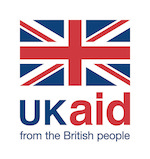Human-centred design has become something of a buzzword in the humanitarian sector. But what does it actually mean? In the simplest terms, human centred design is a practical and iterative methodology for problem solving. It draws upon lived experiences, recognising that various perspectives, most importantly those of the end user, will be useful in crafting solutions.
The tools used in human-centred design are created to help the researcher put themselves into the end users’ shoes. Through a deep understanding of user’s lives, the challenges faced, the tools they use etc., humanitarian actors, mobile operators and researchers can better craft solutions and programming that is targeting user needs in a way that is accessible to users.
These types of methods are particularly useful when working with marginalised populations that face intersecting barriers. For example, refugees with disabilities will face barriers based on their identities as refugees, as people with disabilities and based on the intersection of both of these. By engaging users themselves as partners in crafting new programming, service providers can better understand these barriers and address them appropriately.
Five Tips for Accessibility
In the winter and spring of 2020, GSMA worked with Safaricom and UNHCR to better understand how people with disabilities in humanitarian settings use mobile technology using human-centred design methods. Our report, Human-Centred Design in Humanitarian Settings: Methodologies for inclusivity shares the tools used in this research as well as ideas on how to ensure they are inclusive.
As design research tools are always deeply participatory and highly adaptable to local context, we’ve documented below five of the lessons we learned on how to ensure design methods are inclusive for people with disabilities.
1. Ensure a variety of mediums and materials available
Throughout the various research activities, it was important to ensure a variety of mediums and materials were available to suit users’ needs and preferences. For example, when creating user journeys, researchers ensured that tactile objects like clay and small figurines were available for participants with visual impairments to use.
Similarly, when recording daily diaries, participants had the choice of recording their experiences with voice recorders, receiving a phone call from the facilitator, taking photos, or writing/drawing. This variety ensured that participants could participate, no-matter their needs or literacy levels.
2. Allow space and offer support
Many of the participants in the research in Nairobi reported they had rarely had the opportunity to provide feedback on the various services in their lives. They used the opportunity to share many of the frustrations and challenges they had experienced. It was important to give space for this type of sharing and to connect people to relevant resources where possible. Having UNHCR as a partner allowed researchers to effectively connect participants to support services, where relevant. Prior to research activities, these local support channels should be identified to ensure that appropriate action can be taken if a participant expresses the need for support.
3. Consider accessibility across the project
When working with people with disabilities in particular, but also marginalised people more generally, it is important to think through all aspects of accessibility. In our research, this included finding physical research locations that were accessible, both in terms of being near participants’ homes and easy to locate. After some initial challenges, we also realised scheduling research sessions at particular times of day increased the challenge for some participants to attend.
Additionally, aspects of accessibility like ensuring that exercise guidelines were available in several languages or that enough time was allotted for sign translation alongside translation into several other languages were essential.
4. Ensure autonomy and include caregivers
In this research, caregivers sometimes accompanied research participants to the sessions. We decided in order to incorporate their viewpoints, without detracting from their ability to share their own experiences, we would have caregivers participate separately. Caregivers sat at a separate table and were asked to do the same activities, providing their perspectives on the experiences of people with disabilities. This allowed us a deeper understanding, incorporating their perspective, without detracting from the users’ ability to tell their own stories.
5. Move between working with groups and individuals
Often design research methods are new to participants. Some participants might need time before they are fully comfortable recreating their experiences accessing health services using clay, for example. We found that starting the activity as a group, gathering examples of experiences to speak about, often helped people gather their own thoughts. Transitioning to individual work afterwards, with the facilitator working their way around the room to speak with people individually, helped create a more comfortable environment.
You can find more information, along with tools that can be used for design research in the full report, Human-Centred Design in Humanitarian Settings: Methodologies for inclusivity.



